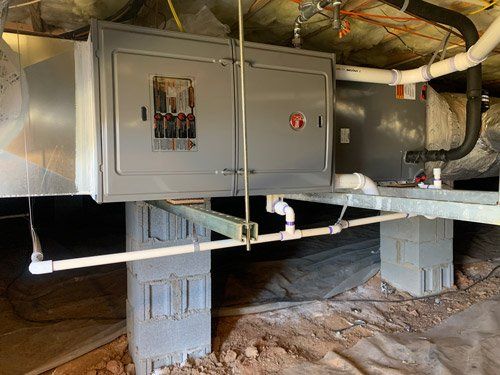Why furnace installation is crucial for maximum home heating efficiency
Why furnace installation is crucial for maximum home heating efficiency
Blog Article
The Ultimate Overview to Heater Installation for a Cozy Home
Furnace installment is an important element of maintaining a comfy home atmosphere, especially throughout the chillier months. As you take into consideration these variables, the concern continues to be: what steps can you take to ensure your furnace serves you well for years to come?
Sorts Of Furnaces

Gas furnaces are one of the most usual selection as a result of their performance and lower operational costs. They make use of gas or propane, supplying fast heating and constant performance, making them perfect for chillier environments.
Electric heating systems, while typically easier to mount and preserve, often tend to have greater operational costs. They are typically preferred in locations where gas solution is inaccessible or for homes with existing electric facilities.
Oil furnaces, though much less common today, remain a practical choice in specific regions. They shed heating oil, which can be advantageous throughout colder months, yet their reliance on oil shipment presents possible obstacles.
In addition, there are high-efficiency designs readily available across these kinds, which can dramatically lower power intake and energy costs - furnace installation. Eventually, recognizing these furnace types will assist house owners choose a system that aligns with their home heating needs, budget plan, and power preferences
Selecting the Right Size
Choosing the appropriate size for a heating system is critical to making certain optimum performance and power effectiveness. A small heating system will have a hard time to preserve comfortable temperatures throughout the cold months, leading to enhanced damage, higher energy bills, and possible system failure. Conversely, an oversized heating system may cycle on and off as well regularly, causing inefficient home heating and uneven temperature level circulation within the home.
To identify the proper heater dimension, an estimation recognized as the Handbook J tons computation must be done. This process assesses numerous factors, consisting of the square footage of the home, insulation levels, home window dimensions, and local climate problems. This extensive evaluation guarantees that the heating system fulfills the particular heating needs of the area.

Installment Process Overview
In terms of materials, you will need ductwork, insulation, and sealing tape to ensure optimum air flow and energy efficiency - furnace installation. It is also crucial to have a new heater filter available, in addition to airing vent products, such as PVC pipe or steel flue, relying on the type of furnace being installed
Security tools, including gloves, safety glasses, and a face mask, is also critical to safeguard against dirt and debris throughout setup. Having all these devices and products readily offered not only simplifies the process yet also enhances the security and effectiveness of the heater installation.
Maintenance Tips for Long Life
To guarantee the long life of your furnace, it is necessary to execute a regular maintenance timetable that addresses crucial parts of the system. Start by changing or cleaning up the air filter each to 3 months, as a blocked filter can restrict airflow and reduce efficiency. Furthermore, evaluate and cleanse the blower setting up to avoid dirt build-up that can hinder performance.
Following, inspect the thermostat setups and alter if required to guarantee precise temperature level policy. Inspect the ductwork for leaks or blockages, as this can bring about energy loss and unequal home heating. Routinely oil the electric motor and bearings according to the producer's recommendations to minimize wear and tear.
Professional assessments need to occur yearly, where a certified specialist click now can evaluate the heating system's general problem, check for gas leakages, and make certain that security functions are functioning appropriately. Ultimately, take into consideration setting up a programmable thermostat to enhance energy use and maintain consistent home temperatures. By adopting read these upkeep techniques, you can improve your heater's efficiency, extend its life expectancy, and inevitably appreciate a comfy and comfortable home environment.
Conclusion

Report this page